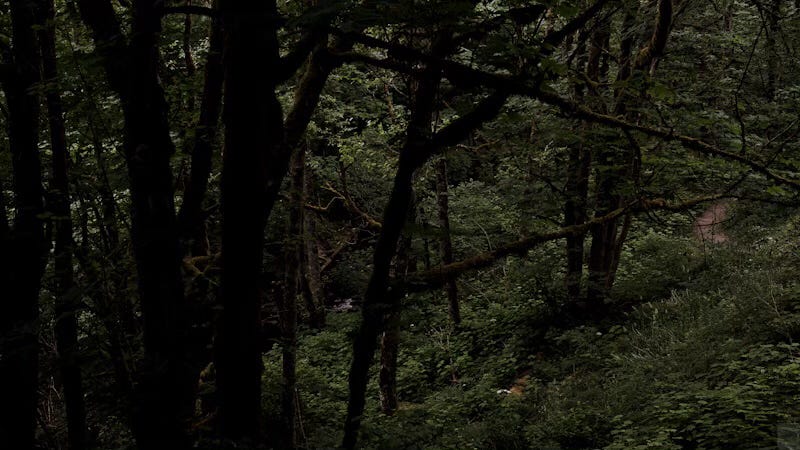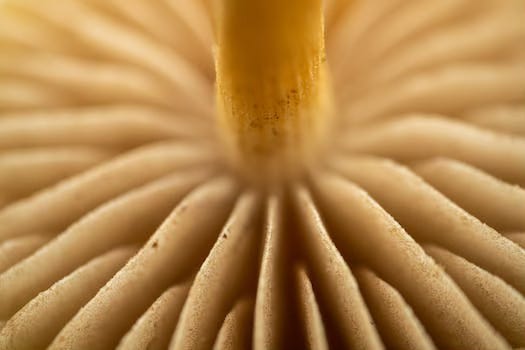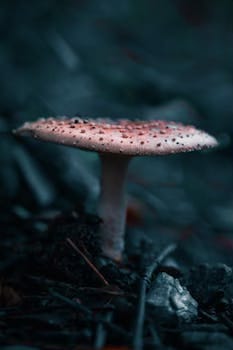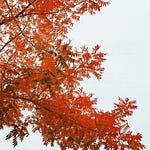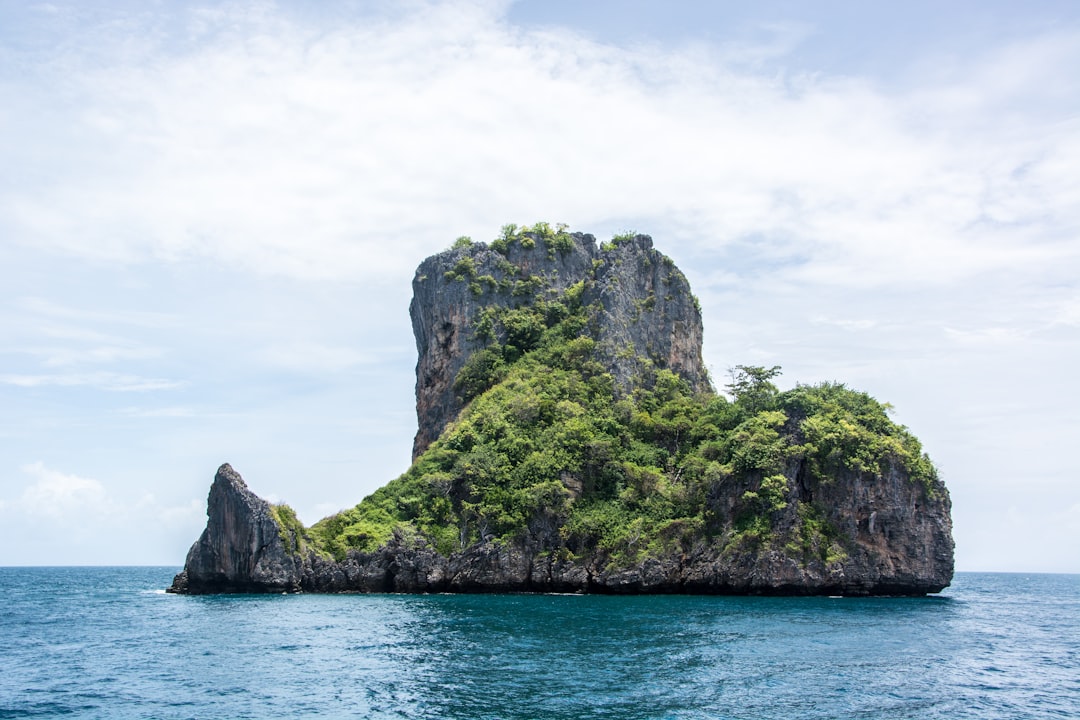The aroma of mushrooms mingles with cedar, an evocation of summer’s nostalgia, a reminder of autumn’s melancholy. I am on the hunt for the little fungi, not to harvest, but to learn from their wondrous ability for communal living in unstable situations. It’s strange to be part of a mute hunched group, nose at the level of our knees, silently processing through a dappled coppice. Without reason, I feel a tinge of competitive envy shiver through me. I side-eye one of my companions, crouched a few yards away. Have they already found one? Am I behind? Should I be looking elsewhere? What previous knowledge do they have, I lack? What if I don’t find what I’m supposed to be searching for?
I stifle my scarcity mindset. Focus on the task. Mushrooms develop in moist decaying habitats. The word in English has come to mean proliferation, a flourishing of growth without regard for limitations. However, each mushroom variety requires its own set of conditions in order to thrive. Matsutake multiply in pine-infested, poor soil. Chanterelles require mossy undergrowths. Enoki is found on broad-leafed dead wood. Maitake need old-growth deciduous oaks and maples.
Whatever the type, many mushrooms form collaborative relationships with their surroundings, which means they cannot be mono-cropped or industrially cultivated. They are both a panacea against capitalism and in many cases a salve to landscapes damaged by human greed. An example to our species of how to be in relationship with environment, of how to expand the imagination beyond stultifying labels of asset or waste, of how to make use of the “unusable,” of how to help one another root in lost spaces.
Like any food, mushrooms are accompanied by fanatics and detractors, filled with personal tastes that entwine culture and history in knotty assemblages. And foraging for mushrooms confronts me with the biological entanglement of our planet. Under the soil, beyond what is visible to me, mycorrhiza and rhizome enmesh symbiotically. Butterflies rely on ant colonies. The survival of fruit seeds depends upon wind direction, bird populations, and soil nutrients. Also bacteria literally keep me alive, aiding everything from digestion to disease immunity.
To classify, to name, to individuate may be an inclination of ours, but it hinders understanding of both ourselves and history. The earth resists being sorted into species and genus, yet so many human ideas rest upon this us versus them categorization. Fungi, on the other hand, are remarkable for their genetic mosaics, their lack of ego, their coordinated tendencies. Lichen harmonize with algae and cyanobacteria. Blue-stain mycelium corral nematode. Conifer and saprophyte integrate. It’s a dynamic rope-pulling complication of connections that grows worlds.
Mushrooms, and on a larger scale forests, are never self-contained but always in relation to their ecosystem. To find the mushroom, and to navigate the forest, requires paying attention to site specifics. What particular trees are growing together in a clump? How much light filters through in this undergrowth? What is the soil acidity where I am stepping? It is a practice of considering the mushroom’s needs, the forest’s needs, as equal to my own.
I observe the others reading the topography, each of us fascinated by something different which attracts us here. Later we’ll share our patches of knowledge, marvel at how we missed things walking the same terrain. For now, I follow aromas and indentations, slow my racing heart and pace. I try to sense potential, feeling like a medieval dowser. I’m practicing another form of relationship to the terrain I didn’t know I could possess. I spy a flash of cream in the mottled greenery. I sidle towards the spot. I bend down. A fruiting spore! My body thrills at this encounter. I nod and smile. Introduce myself. Mushroom, and forest, and I are now bound in a new dance full of possibilities.
Bespoke Traveler Note:
Anna Lowenhaupt Tsing studies capitalism, modernism, and climate crisis through the lens of matsutake in “The Mushroom at the End of the World.”
Thank you for listening. “In Search of Fungi” was written and narrated by Atreyee Gupta. To find more, head to our website at www.bespoketraveler.com.




